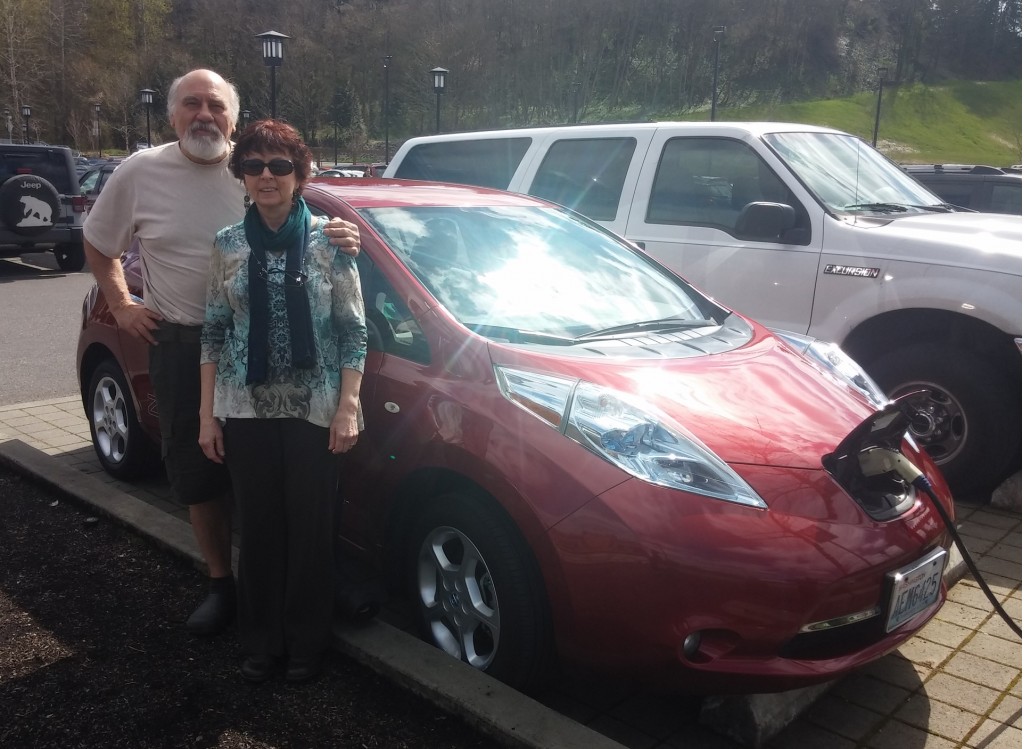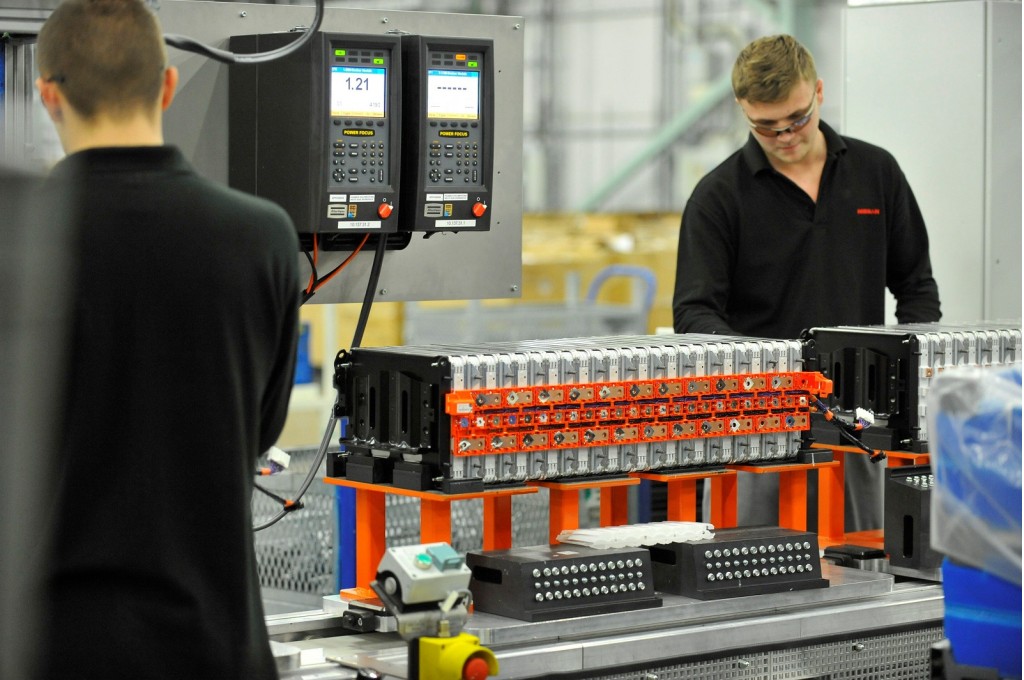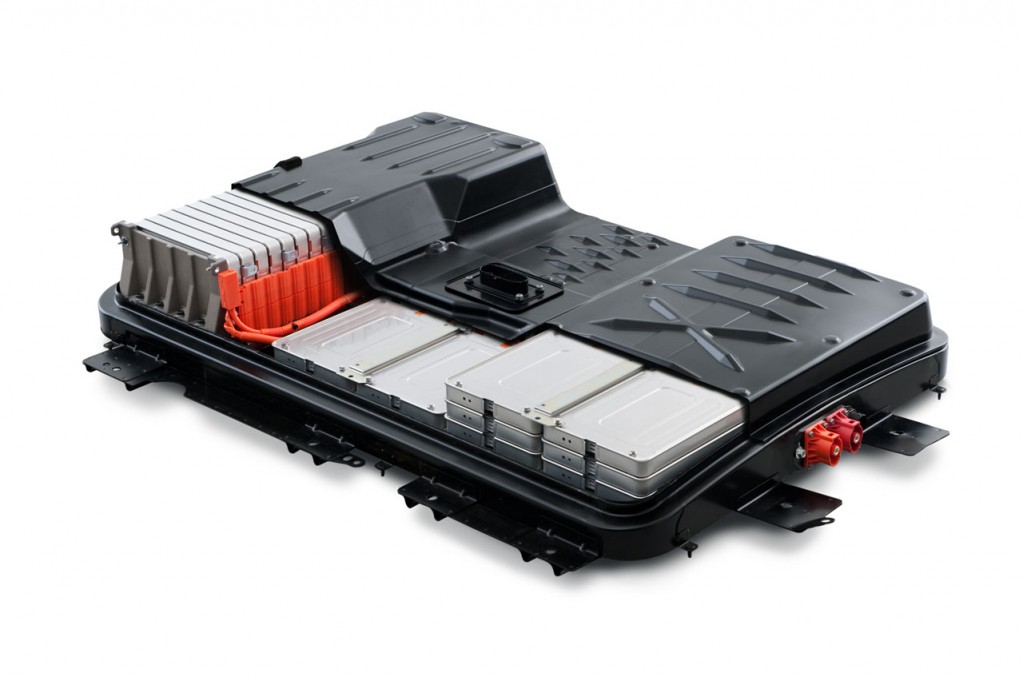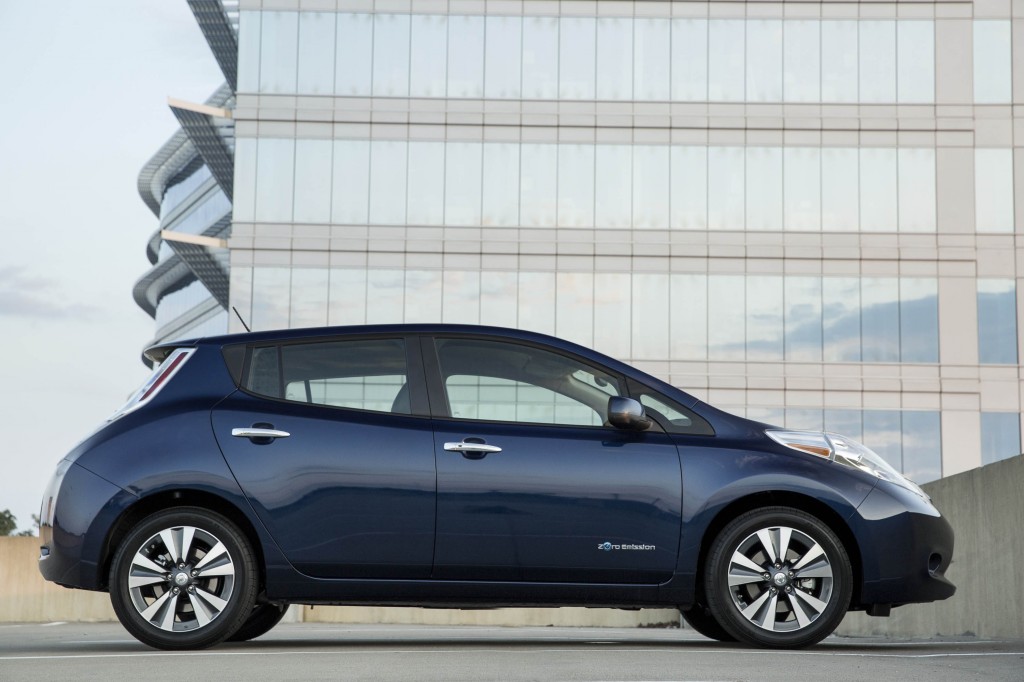
Rick and Linda SantAngelo with the 2011 Nissan Leaf at 96,000 miles
The 2018 Nissan Leaf will likely be revealed within the next three months, but more than 100,000 older Leaf electric cars are still silently in use on U.S. roads.
Some of them, especially the lowest-range cars from the two earliest model years (2011 and 2012), have started to see significant battery capacity degradation.
That was the case with Rick and Linda SantAngelos' 2011 Nissan Leaf after 90,000 miles: it had only 30 to 35 miles of range left on a battery originally EPA-rated at 73 miles of range.
DON'T MISS: Lessons learned from early electric car: 2011 Nissan Leaf at 90,000 miles
That made their early Leaf all but unusable, as Rick recounted in a post we published in late March.
At that point, Nissan Leaf Customer Support had told them that the battery condition was normal and to be expected, and that the car wasn't worth enough that they should spend more than $8,000 on a new battery.
Their local dealer claimed to know nothing about the $6,500 price for a new pack that Nissan announced almost three years ago, and they got no help on that front from Customer Support either.

Lithium-ion cell and battery pack assembly for Nissan Leaf electric car in Sunderland, U.K., plant
Now, however, the SantAngelos have a resuscitated 2011 Leaf, with a replacement battery pack, and they've updated us on their saga.
We should note that for Leaf owners who intend to try to negotiate with Nissan over getting a replacement Leaf battery for one that has severely degraded, there's some advice to follow.
Owner Tim Jacobsen and his husband Steve laid out their recommendations for how to proceed in a post we published in April.
READ THIS: How to negotiate for a new Nissan Leaf battery pack: electric-car owner advises
Meanwhile, the SantAngelos are happy with their refreshed Leaf.
But it took Rick some effort to get to that point.
What follows is his update to the original story, edited by Green Car Reports for style, flow, and clarity.

2011 Nissan Leaf - battery pack cutaway
I decided to take Nissan up on its Leaf Battery Replacement offer; my dealer told me that my replacement battery pack was the first on the West Coast.
The replacement is a newly-manufactured 24-kilowatt-hour battery pack with cells that use the “lizard” chemistry that handles heat better.
Heat is hard on a battery—not just ambient temperature but also the heat generated under normal charging and use.
CHECK OUT: 2018 Nissan Leaf: rumored timing, steps for U.S. rollout
When the battery pack degrades, the car's range drops more than you might think, for a couple of reasons.
Regenerative braking is less efficient when the battery degrades. When the battery was newer we averaged 4.0 to 4.2 miles per kwh hour, but at 57-percent capacity we averaged only 3.6 mi/kwh in the best of conditions.
With the new battery, we average 4.4 mi/kwh, and the difference is due to regenerative braking.
Rick and Linda SantAngelo with the 2011 Nissan Leaf at 96,000 miles
The reserve capacity of our new pack is about 3.5 kwh, according to Leaf Spy Pro (more on that later).
Since the reserve capacity of any pack is a fixed number, the percentage of total capacity it represents rises as capacity decreases.
Then there's this: we live on a hill, so the last leg of any trip we take includes an 800-foot climb. I think this is very bad for an electric car, for a few reasons:
- First, for every trip the last few miles take three or four times the energy as they would in level driving, which adds to range anxiety.
- Second, and more importantly, when you charge to 100 percent and start off heading downhill, the battery level fluctuates between 98 and 100 percent—which is hard on any battery. (I believe this factor may have contributed to my shortened battery life. When I charge to 80 percent, I pick up 3 to 4 percent more capacity on the descent, but if I head down the hill with a full charge, I pick up no additional charge and possibly degrade my battery.)
- Third, the Nissan trip computer’s range-estimating algorithm factors in unrealistic efficiency because of those first few downhill miles. This throws the remaining-range estimate way off, as much as 50 percent higher than my actual range. If there were some way to reset the estimate at the bottom of the hill, it might be more accurate. But better yet, Nissan should modify that algorithm to take downhill travel (based on data from the car's inclinometer) into account.
2017 Nissan Leaf 
New Leaf vs battery replacement
Mechanically, the Leaf is a very sound car. At 94,000 miles, we are still on our original brakes and the wheel alignment is perfect.
There is basically nothing in the drivetrain beyond the battery and the electronics that could go wrong, and I have never heard of the electronics failing.
With a new battery, our 2011 Leaf is even better than it was new—and I expect to put another 100,000 miles on the car.
How to monitor your battery in real time
I don’t know why Nissan gives us so little information on battery condition, but I believe it's hugely helpful to monitor your battery condition in real-time.
The Leaf Spy smartphone app with an inexpensive Bluetooth On Board Diagnostics (OBD) Bluetooth connector does the job.
The following diagram points out statistics that are available in the Leaf Spy free edition.
![Old and new battery condition, 2011 Nissan Leaf electric car, per Leaf Spy [images: Rick SantAngelo] Old and new battery condition, 2011 Nissan Leaf electric car, per Leaf Spy [images: Rick SantAngelo]](https://images.hgmsites.net/lrg/old-and-new-battery-condition-2011-nissan-leaf-electric-car-per-leaf-spy-images-rick-santangelo_100611771_l.jpg)
Old and new battery condition, 2011 Nissan Leaf electric car, per Leaf Spy [images: Rick SantAngelo]
The two figures illustrate the differences between a new battery and a deficient battery. The red lines indicate cell pairs that have been shunted, which I assume is to keep the power evenly distributed over the cells. The most important statistics are:
- State of Health (SOH): current battery capacity as a percentage of original capacity
- Amperage Hours (AHr): current power level
- State of Charge (SOC): current level of charge
For $14.99, you can purchase Leaf Spy Pro, which adds several features that I found worth spending the money.

Rick and Linda SantAngelo with the 2011 Nissan Leaf at 96,000 miles
In addition to a more readable format, Leaf Spy Pro has a few additional screens and offers data derived from real-time statistics.
When you get a screen like the one below, you can adjust the mileage estimator to get a more accurate guess on how far you can travel on the current charge.
Leaf Spy Pro also reports the remaining usable capacity in kwh, which is the best number to use when calculating remaining distance.
![LeafSpy Pro app showing real-time Nissan Leaf electric-car operating data [image: Rick SantAngelo] LeafSpy Pro app showing real-time Nissan Leaf electric-car operating data [image: Rick SantAngelo]](https://images.hgmsites.net/lrg/leafspy-pro-app-showing-real-time-nissan-leaf-electric-car-operating-data-image-rick-santangelo_100611772_l.jpg)
LeafSpy Pro app showing real-time Nissan Leaf electric-car operating data [image: Rick SantAngelo]
Not all ODB connectors work with all cars, however: I bought my first connector, and it generated errors when installed on my Leaf.
The one that worked perfectly on my Leaf was the Vgate OBC2 Bluetooth Scanning Tool, which cost me less than $11.
Nissan Leaf Battery Replacement Program
You can buy a new Leaf battery for $5,500 under the Leaf Battery Replacement Program.
If your battery has degraded but you're not eligible for a warranty replacement, you may want to consider replacing your battery under this program. That’s what I did, and we've been very happy with the results.
If your battery capacity drops four bars within the first 60,000 miles or five years (whichever comes first), you are entitled to a replacement under the new-car warranty that Nissan provides with every Leaf.
My fourth bar dropped at 65,000 miles, so I did not qualify. I was able to buy a new battery pack under this program—which is good only for Leafs that have a clear title (not salvaged or reconstructed), but only available through Nissan dealers.
Nissan will finance up to $5,500 for 12 to 60 months. The 2011 battery requires a few additional parts to fit the new 24-kwh pack, and the old battery must be returned to Nissan.
My costs were (plus sales tax):
- Battery $5,499.00
- Parts 290.40
- Labor 375.00
- Finance 100.00
The dealer is not allowed to mark up or profit in any way from the battery replacement, and the labor charge is fixed at 3 hours. I paid State of Washington sales tax and financed the $5,500 cost for three years at $150 per month (at a 3.09% APR).
Considering that we will probably drive our Leaf 50,000 miles over the next three years the cost of the new battery is a little over $.13 per mile. I call that cheap transportation!
The battery is covered by the same warranty as a new Leaf: if its capacity drops four bars within five years or 60,000 miles, I am entitled to a free replacement. Note that Nissan's 100,000-mile / 8-year warranty only covers the battery if it fails completely.
In sum: enjoy your Nissan Leaf, and don’t send it to the junkyard if your battery loses capacity!
_______________________________________













